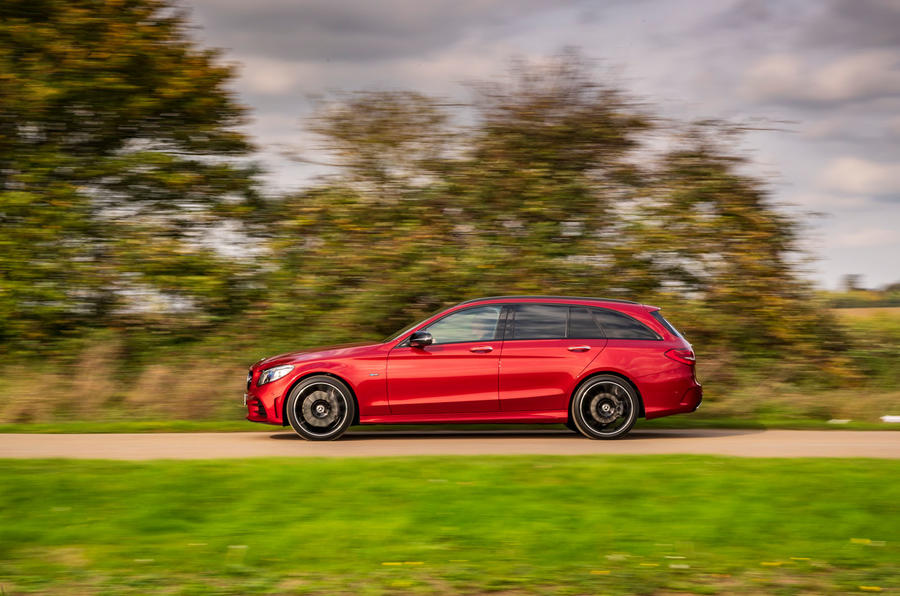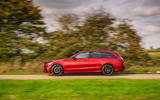What is it?
A late arrival, mainly. Given we first drove the refreshed C-Class in summer 2018 and the hybrid C300e was first launched in some markets last year, it’s surprising that only now right-hand drive, UK examples are available for us to try.
You can probably blame a mixture of last year’s WLTP testing bottlenecks and a certain ongoing pandemic for that. Crucially, though, it means that since the updated compact executive first arrived BMW has introduced a whole new generation of 3 Series, and Audi has given the A4 a mid-life makeover.
The other major market trend that’s changed in that time is the importance of PHEVs in a brand’s portfolio. While the market share of full EVs tentatively grows, the ‘stepping stone’ plug-in hybrid tech remains (for now) popular, and certainly more so than in 2018. Nowadays, BMW will tell you that its 330e is one of the most popular variants, so it’s unusual that Audi still doesn’t offer a plug-in A4.
The C300e, then, should nab some useful volume (particularly on the company car side) for the brand. And, don’t forget, Mercedes also has the rather good diesel electric C300de. The petrol version used to be dubbed C350e, but for reasons not entirely clear it’s lost 50 badge points for the facelift.
That’s despite it putting out a chunk more power than the old car, mating a new generation 2.0-litre four-cylinder unit to a much healthier 120bhp electric motor (the C350e’s was a mere 80bhp) with all power put through the rear wheels.
Crucially, the battery has more than doubled in size, from 6.2kWh to 13.5kWh. That takes the quoted range from a rather measly 19 miles to a much more useful 34.

































Join the debate
Add your comment
I actually bought this very press car from a dealership in Southend on Sea. Mint and with only just 2k miles on the clock it was a bargain too. I've driven the 2017 BMW 320d Touring for 3 months and while it was a nice drive it certainly wasn't exciting. I agree that the Beemers interior is awful, like a plastic convention exhibit, albeit a good quality plastic exhibit. The Merc is a much nicer place to be in my opinion. As for how the merc drives, it does the job and on the ever deteriorating British roads that air suspension is a godsend. It may wallow in comfort mode but at least you keep your fillings in your teeth on the certain potholes you'll find on our roads. I do agree that the battery hump is a proper ball ache to begin with but you do get used to it and my days of prams and child seats are now well behind me so I don't need as much luggage space anyway. I picked it up before the second hand market went through the roof. I've put 6k miles on the clock and WBAC will still buy it off me for £1500 more than I paid for it. So even if you think it's a dud of a car, it's a dud that will make me smile in my pocket and behind the wheel. I happen to think it's a bit of a looker too, but I'll agree that all car looks are subjective.
I like the looks,and it's
I like the looks,and it's impressively quick but at the price it is it would need to be considerably better than the CLA and considerably cheaper to run than the petrol or diesel to make much sense. You just know the next generation is going to be so much better it would need to be really cheap to make sense.
its ok mate